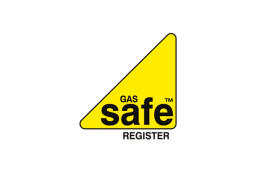Lowering The Flow Temperature
The 'flow temperature' is the temperature your boiler heats up the water to before sending it off to your radiators. Most gas boilers are set up to operate at what is called 80/60 flow and return temperatures. This means the boiler heats up the water to 80°C. The water returns to the boiler after travelling around all your radiators at 60°C, having given off 20°C to the room.
However 80/60 flow and return temperatures are too high for a condensing gas boiler to achieve the maximum condensing efficiency.
At 70/50°C the boiler will start to operate in condensing mode. Only when the flow temperature is 60°C or lower will the boiler recover enough heat to reach its higher efficiency potential.
Reducing your flow temperature
You need to go to the controls on front of your boiler, not your room thermostat. The way in which you adjust the flow temperature and the display information available varies a great deal. Three common are examples are given below:
Most combi boilers have two dials: one for heating usually with a little radiator icon over it and one for hot water with a little tap icon. Some only have one dial but it is usually for the heating flow temperature. Some like Worcester are numbered 1-6, some have dashed lines and others a curved line of increasing thickness. Some user manuals do provide additional information.
If you have to work it out manually, then as a guide most boilers have flow temperatures that operate between 30°C-80°C. Which means 60°C will be about half way or the No. 3. We suggest setting to No.3 to begin with or at the half way mark (12 o'clock position).
Digital displays with up and down buttons
Some newer boiler models have digital displays with up and down buttons or plus (+) and minus (-) buttons. You simply adjust the flow temperature via the 'down' or 'minus' button and the flow temperature figure will show in the digital display. Sometimes you have to press and hold a menu button to bring up the flow temperature.
What is the correct boiler water temperature setting?
The correct temperature setting for heating on a combi boiler is 'as low as possible', but as a guide most older homes can run their heating systems at 60°C and newer homes at 50-55°C. They start to reach their very highest efficiency potential at 45°C flow temperature or lower, but this can be too low for older properties.
Ultimately how low you can turn your flow temperature down will depend on the size of your radiators, how well insulated your home is and your thermostat temperature and how long you have the heating on for.
Lower flow temperatures need more surface area of radiator to meet your desired room temperature. The good news is that most radiators are bigger than they need to be as the industry has sized based on guesswork or used basic online calculators that almost always overcompensate. We recommend trying it at 60°C. If you have a home built after 2010, try 50°C.
For homes with modern double glazing, cavity walls and good levels of loft insulation you should be able to drop your flow temperature down with no impact on comfort. Even older homes, particularly terraced houses, will be able to do this if they have been modernised and draft proofed.
Keep lowering the flow temperature!
60°C (or 50°C in a modern home) is the temperature you need on a very cold day. During the milder winter months you will be able to go lower and this will help the boiler run even more efficiently.

Will I notice any changes in my heating system?
Yes. Your radiators will not feel so hot. This is a sign that the system is running a little cooler, which is what you are trying to achieve. Providing your home does not feel cold and you do not feel cold, the boiler and system are working correctly and more efficiently.
If you have your heating programmed to come on for a very limited amount of time, you may notice that it will take longer for your home to heat up. Many households are accustomed to short heat up times because they run so hot. Lower flow temperatures will mean slightly longer heat up times. (make some changes to your on/off switching times if needed)
For those that have the heating on much of the day, you will move to lower temperatures for longer periods which will have a positive impact on fuel bills
We need your consent to load the translations
We use a third-party service to translate the website content that may collect data about your activity. Please review the details in the privacy policy and accept the service to view the translations.
